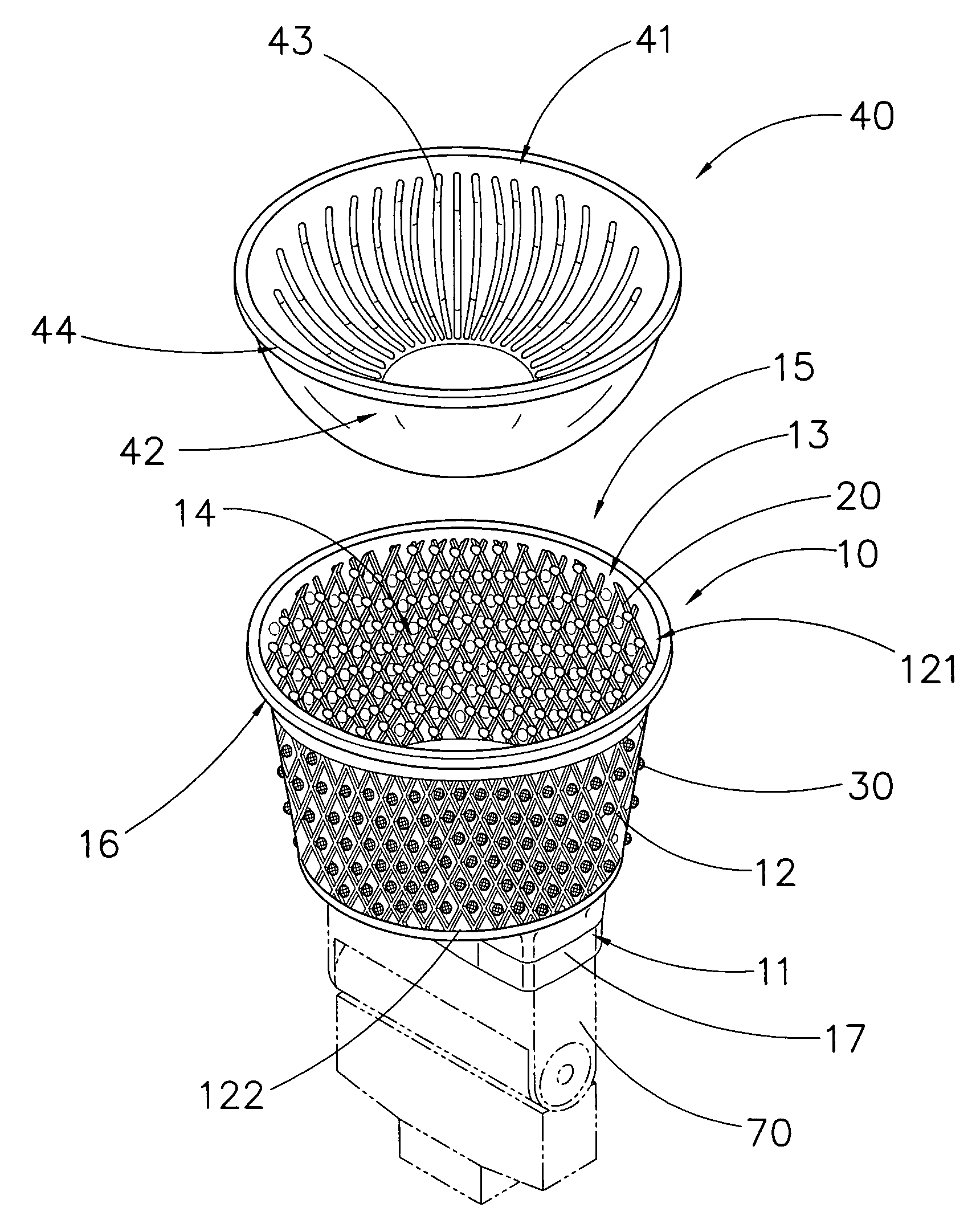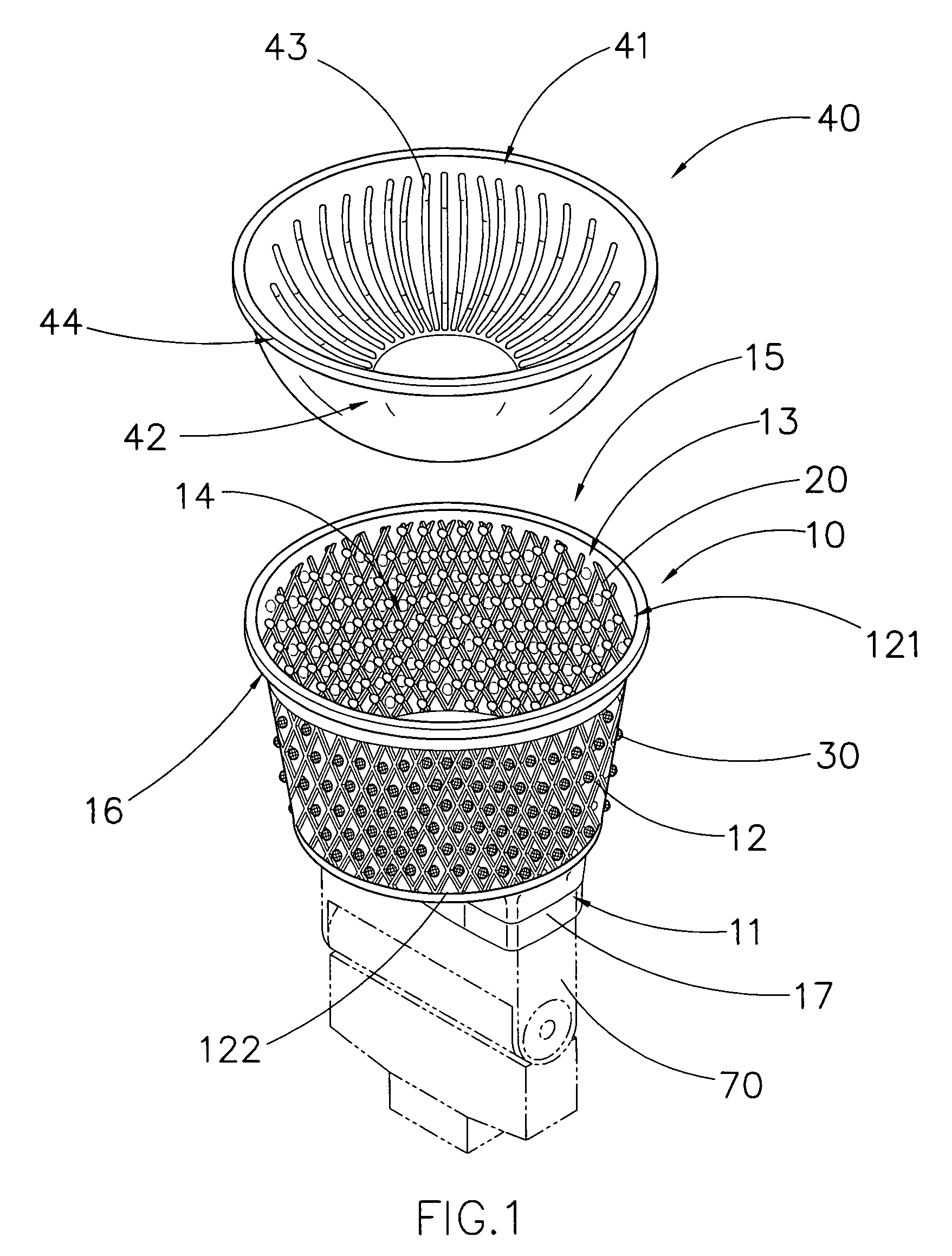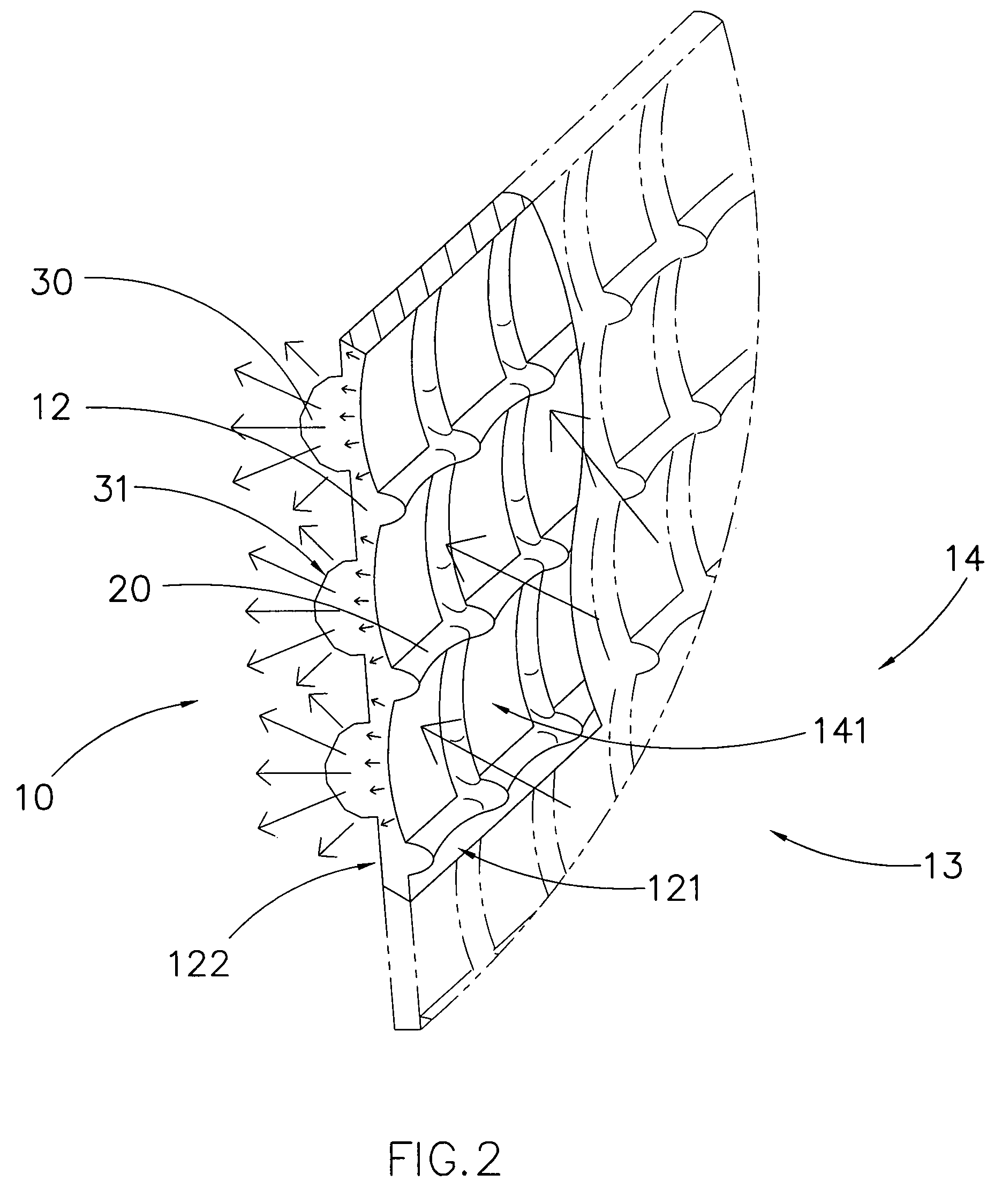Photographic flashlight
a flashlight and photoelectric technology, applied in the field of photoelectric devices, can solve the problems of unsuitable or optimal lighting effect of the flashlight, low or too high flashing, and objects being shot that are not properly illuminated, and achieve the effect of optimal lighting effect of the photographic devi
- Summary
- Abstract
- Description
- Claims
- Application Information
AI Technical Summary
Benefits of technology
Problems solved by technology
Method used
Image
Examples
Embodiment Construction
[0022]Referring to FIG. 1 to FIG. 3 of the drawings, a light diffusion arrangement according to a preferred embodiment of the present invention is illustrated. The light diffusion arrangement is for a photographic device having a flashlight 70, and comprises a diffuser housing 10, a plurality of diffracting meshes 20, and a plurality of light diffusing elements 30.
[0023]The diffuser housing 10 has a base portion 11 for mounting with the flashlight 70 of the photographic device, and a light-admissible surrounding sidewall 12 extended from the base portion 11 to define a light diffraction cavity 13 within the base portion 111 and the surrounding sidewall 12.
[0024]The plurality of diffracting mesh members 20 is formed on an inner side surface 121 of the surrounding sidewall 12 of the diffuser housing 10, wherein each of the diffracting mesh members 20 is adapted to diffract light impinging thereon to a predetermined direction within the light diffraction cavity 13.
[0025]The plurality o...
PUM
 Login to View More
Login to View More Abstract
Description
Claims
Application Information
 Login to View More
Login to View More - R&D
- Intellectual Property
- Life Sciences
- Materials
- Tech Scout
- Unparalleled Data Quality
- Higher Quality Content
- 60% Fewer Hallucinations
Browse by: Latest US Patents, China's latest patents, Technical Efficacy Thesaurus, Application Domain, Technology Topic, Popular Technical Reports.
© 2025 PatSnap. All rights reserved.Legal|Privacy policy|Modern Slavery Act Transparency Statement|Sitemap|About US| Contact US: help@patsnap.com



